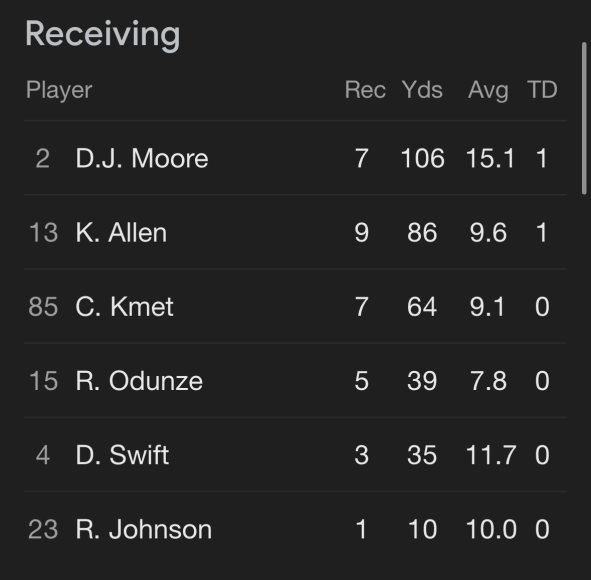Since the promotion of Thomas Brown to offensive coordinator, the Chicago Bears’ offense has undergone a dramatic turnaround, leaving behind the ineptitude that defined Shane Waldron’s tenure. In just two games under Brown’s leadership, the offense is averaging 395 total yards per game, including 266 through the air and 129 on the ground, with an impressive 5.7 yards per play. Quarterback Caleb Williams, who had struggled to find consistency earlier in the season, has flourished, amassing 571 passing yards, two touchdowns, and no interceptions in this short span.
The Shane Waldron Experiment: A Cautionary Tale
When the Bears hired Shane Waldron, expectations were high. He came with a résumé touting success with elite quarterbacks and innovative offenses. Unfortunately, his approach failed miserably in Chicago. Waldron’s inability to adapt to Caleb Williams’s unique strengths and the roster’s dynamics led to disjointed game plans and a lack of offensive identity. His schemes frequently stalled in critical moments, placing unnecessary pressure on the defense and leading to frequent one-score losses.
Waldron’s failure underscores a recurring issue for the Bears: an inability to identify and hire the right coaching talent. This has been a consistent pattern under the McCaskey ownership, from offensive minds like Waldron to head coaches such as Matt Eberflus, whose shortcomings in preparation and strategy have further hampered the team’s potential.
Thomas Brown: A Breath of Fresh Air
Brown’s early success is rooted in simplicity and adaptability. He has streamlined the offense, emphasizing quick reads for Williams and taking what the defense gives. This approach has minimized mistakes and allowed Williams to showcase his talent. Against Green Bay and Minnesota, Brown’s play calling demonstrated balance and creativity, with dynamic route combinations and a renewed commitment to the running game.
Subscribe to the BFR Youtube channel and ride shotgun with Dave and Ficky as they break down Bears football like nobody else.
By designing plays that maximize Caleb Williams’ mobility and decision-making, Brown has brought out the best in the rookie quarterback. The offensive line, previously overwhelmed by Waldron’s complex schemes, has also looked more cohesive, providing better protection and opening up running lanes for DeAndre Swift and Roschon Johnson.
A Broader Organizational Issue
While Brown’s success is promising, it also highlights the systemic failures of the Bears organization. Waldron’s hiring wasn’t just a misstep; it was emblematic of an ownership and front office that prioritized flash over substance when making coaching decisions. This pattern has led to years of underwhelming results and squandered talent.
The Bears must recognize the importance of surrounding their franchise quarterback with the right minds. Recent examples across the league, such as Sean Payton’s work with Russell Wilson or Kliff Kingsbury’s influence in Washington, show how much difference a competent offensive coach can make.
The Road Ahead
The Bears’ resurgence under Thomas Brown gives fans hope, but it also raises questions about what could have been if the right coaching decisions had been made earlier. As the team prepares for the future, the front office must evaluate Brown’s performance thoroughly while planning for a long-term coaching structure that aligns with Caleb Williams’ development.
Whether Brown secures a permanent role as offensive coordinator or the Bears seek new leadership in the offseason, one thing is clear: the organization can no longer afford to get these decisions wrong. The Bears’ success hinges on breaking free from the cycle of mediocrity and finally building a staff capable of maximizing the immense potential of their young stars.
Final Thoughts
Thomas Brown’s impact is a beacon of what could be for the Chicago Bears. However, it is also a stark reminder of the missteps that have plagued the franchise. As the Bears look to the future, they must treat Brown’s early success not as a lucky break but as a blueprint for smarter decision-making. If they fail to do so, history will only repeat itself, and another generation of talent will be wasted.
Here’s the ball distribution we thought we would be seeing all year….
















Can we just give Brown credit for fixing some of the basic flaws every Bear fans saw all season, with an oline that’s healing up, and not quite yet touting him as HC or The Next…………? It’s 3 games.
Brown is proof that talented offensive minds have to start somewhere—he gets football, which is much more than we could say about the failed law firm of Getsy, Waldron and Flus. Watching Brown call solid plays that CW can execute and then seeing how successful they are only confirms what each of us has been yelling at our TVs the last few years. And while I would prefer to have CW over JF1, one can only wonder how it might have gone for Fields had Brown been put in this position sooner.
Even though the result was a loss, I had a bonner for well over 7 minutes yesterday.
Thank you, Thomas Brown.
James Westphal and Dr. Kenneth Noisewater concur.
We might call this the redistribution of the wealth. It is simple and about time.